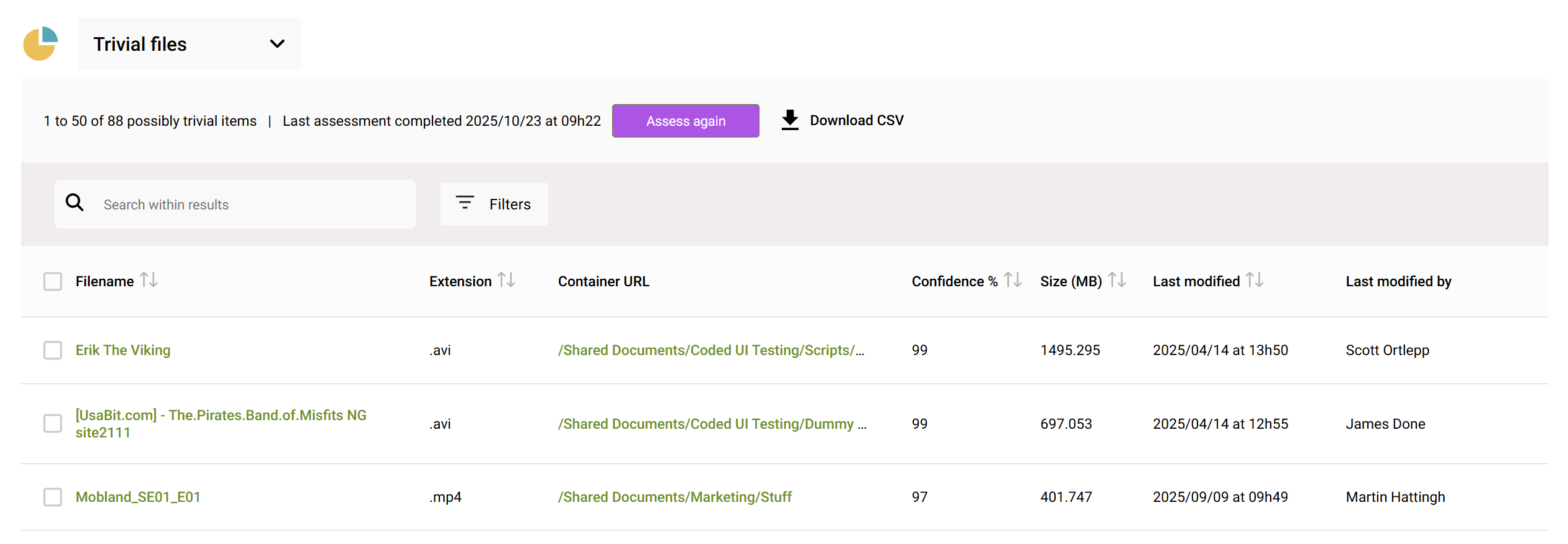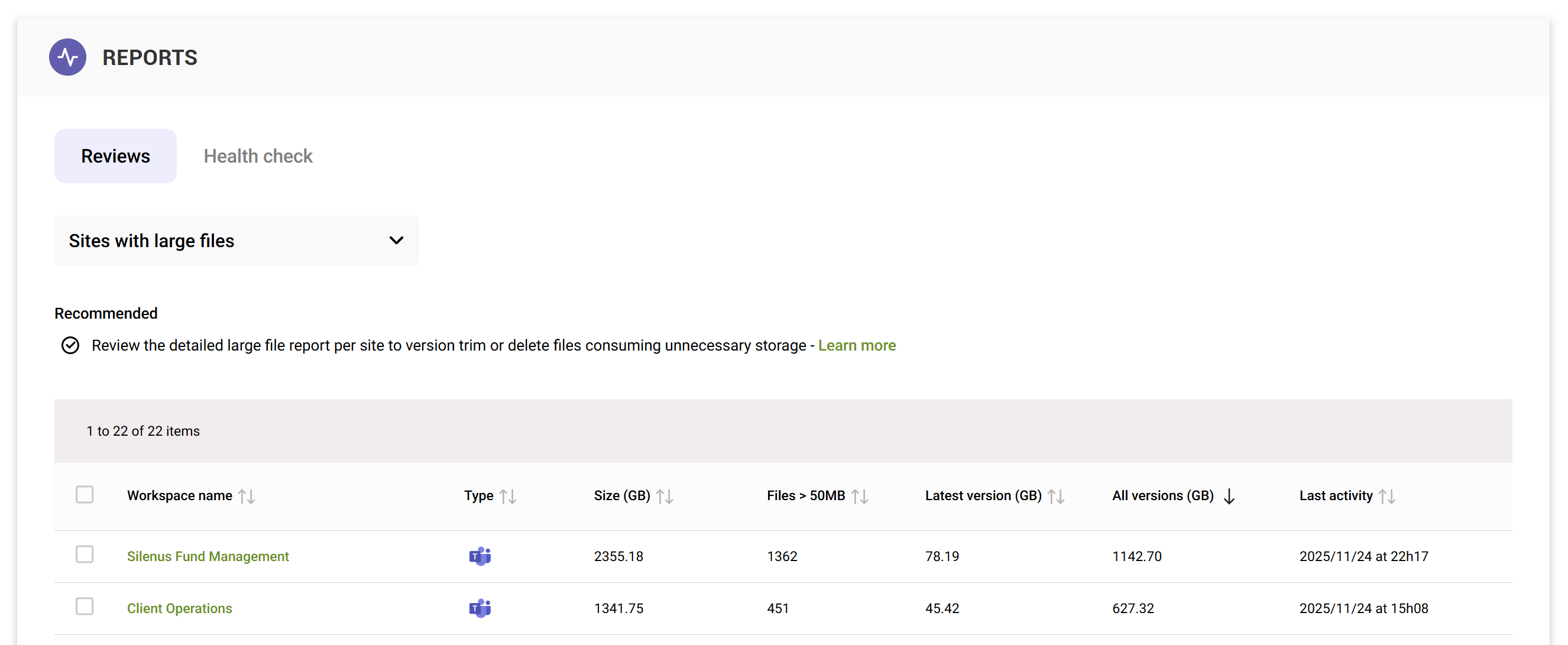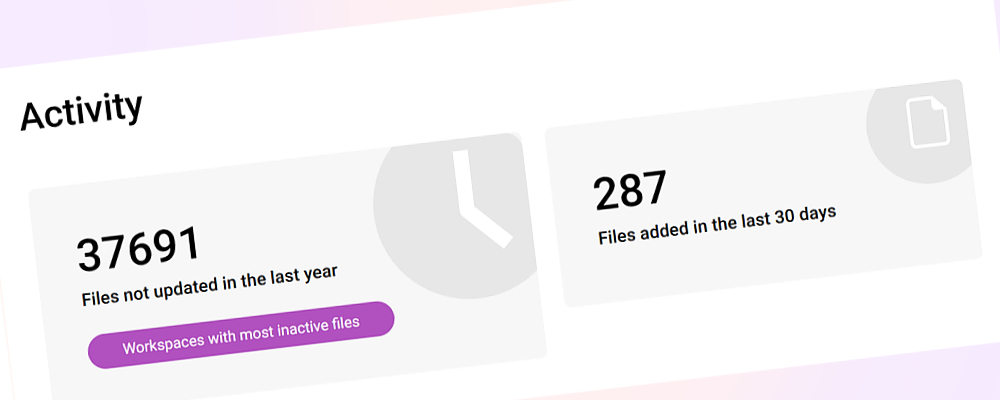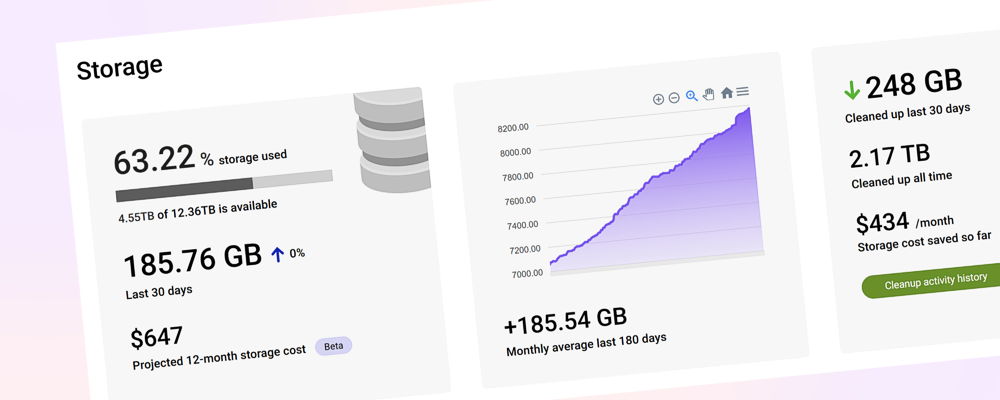Some content should never have been uploaded to SharePoint in the first place. Trivial content not only clutters your environment and consumes unnecessary storage, but also impacts productivity and compliance (and can be a direct legal risk if the content is in the form of pirated movie, series or music files).
Our new trivial content assessment uses Azure OpenAI to identify files that are personal, entertainment-related, or otherwise not aligned with the core purpose of a SharePoint site. SProbot does this assessment by determining the site’s primary purpose based on the majority of its content, ensuring that every file is evaluated in context.
Why this matters
Trivial content often sneaks into collaboration spaces, consuming storage and creating noise. By detecting and flagging these files, SProbot helps you:
- Reduce ROT content across your tenant
- Reduce unnecessary storage consumption
- Improve governance and compliance
- Enhance productivity by keeping sites focused on their intended purpose
How it works
- AI-Powered Analysis: SProbot scans files and classifies them based on relevance and context.
- Purpose Detection: The system determines the site’s main function (e.g., finance, legal, hr, operations) and evaluates content accordingly.
Together with large and inactive files, the content tab on tenants with AI enabled contains a trivial content summary and report listing files found to likely be trivial.

The detailed report (in which you can search and filter) shows file information, the AI classification confidence, and the reason for classification. You can then review and decide to delete or mark files as non-trivial.


The bigger picture
This feature is part of SProbot’s ongoing mission to clean up unwanted content from tenants, and the first of several content types targeted. By leveraging AI, we’re making cleanup smarter, faster, and more effective.
How do I try this?
Ready to experience the benefits of AI-powered content cleanup? Contact us to enable AI content assessment on your tenant.
Also now in SProbot: Sites with large files review, tenant-wide version consumption indicator
With the ongoing crawl now automatically processing item-level information across your tenant, you are able to see where large files are present without manually running a report on specific sites you suspect may contain them. Two reports give you the detailed information you need to make decisions:
Sites with large files review
Because large files may not only be present in the usual suspects (the largest sites), you can now identify their presence regardless which site they're in. The Sites with large files review sorts sites by the total version size of files over 50MB, and you can then use the existing large file report in sites which stand out to trim versions or delete unwanted files.

Tenant-wide version consumption
Just how much of the storage consumed by large files (over 50MB) can be attributed to all versions except the latest? As the ongoing crawl progresses through your tenant, it calculates the version spread and displays the Large file version consumption bar within the Storage section of the Health check.

If not all sites on your tenant have been crawled yet, you'll see this bar gradually adjusting as data is retrieved.











